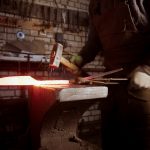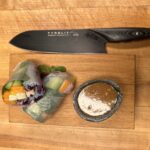What types of knife sharpeners are there?
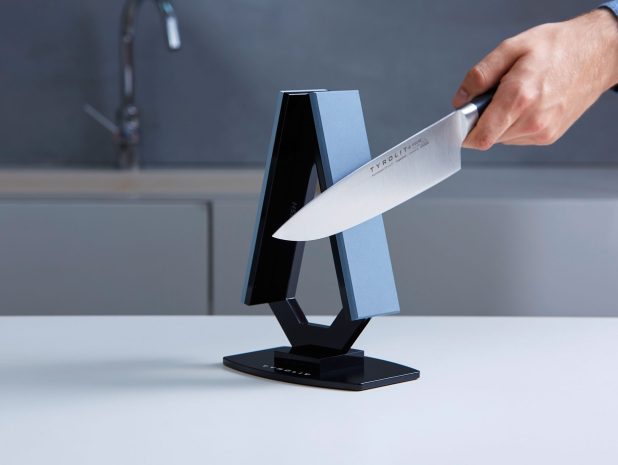
Once the kitchen knife is blunt, you have numerous options to get it back in shape with a knife sharpener. Because the selection of different knife sharpeners is large, and not all tools achieve the same results. In addition, some knife sharpeners are more suitable for beginners, while others are reserved for kitchen professionals.
In this article, we will introduce you to different knife sharpeners and show their strengths and weaknesses. We will also introduce you to the Tyrolit Life knife sharpener and explain what makes the Tyrolean abrasive expert’s approach so special.
Whetstone
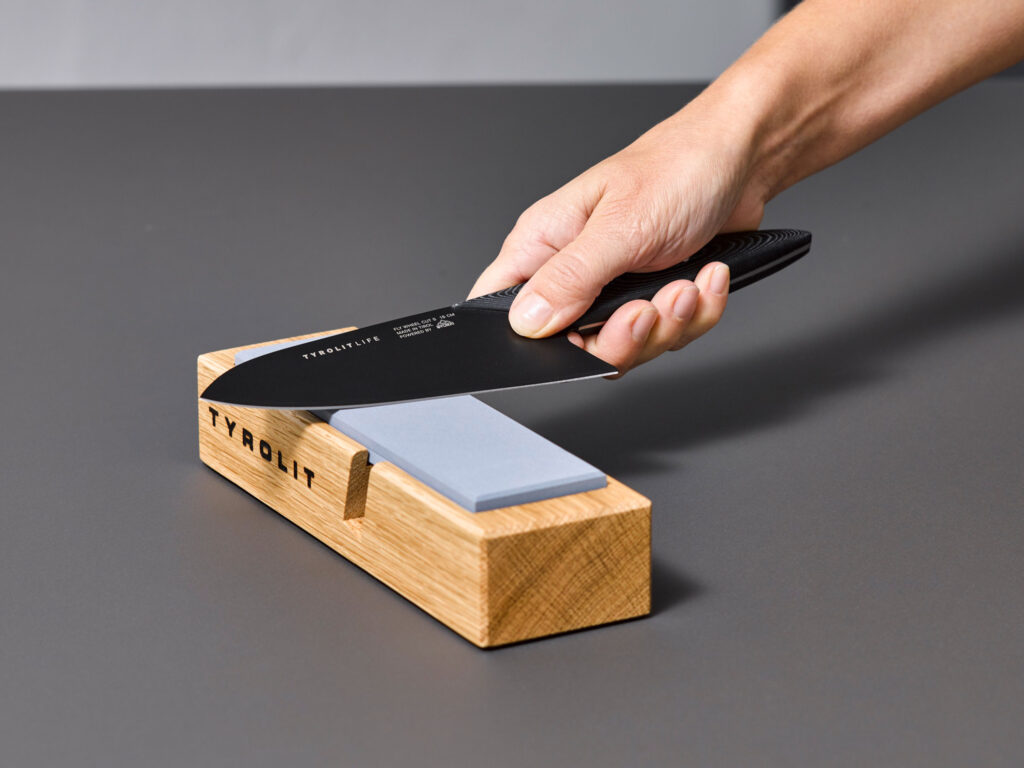
The whetstone, also known as a sharpening stone or honing stone, comes in various grits from coarse to fine, offering the ability to fully resharpen kitchen knives from scratch.
With a whetstone with coarse grain (e.g. 400), the coarse grinding succeeds with efficient material removal from the blade, so that notches are balanced and particularly blunt blades regain a basic sharpness. A fine-grained stone (e.g. 800), on the other hand, allows for fine grinding, followed by thorough polishing. Water stones are particularly popular and require immersion in water to ensure optimal sharpening.
Sharpening with a whetstone requires practice and patience, but the reward is knife blades as sharp as new. This artisanal technique allows for maximum control and achieving the desired level of sharpness with precision.
Whether coarse or fine, the whetstone is an indispensable tool for all those who want to keep their knives at the highest level. Tyrolit Life has developed ceramic whetstones with different grits (400 and 800), which make knife sharpening particularly uncomplicated. They are also integrated into everyday tools such as cutting boards and knife blocks, making sharpening kitchen knives a daily occurrence.
Sharpening steel
The sharpening steel, also known as the sharpening rod, is an indispensable tool for those who want to bring their kitchen knives to the highest sharpness. This cylindrical utensil made of hardened steel, often with a diamond coating, is perfect for sharpening blunt blades. By simple application, even less experienced chefs can achieve impressive results.
However, handling the sharpening steel requires some practice. The rod is held vertically while the blade of the knife is guided at an angle over the smooth surface with slight pressure. This creates a fine burr that restores the sharpness of the knife.
A honing steel is particularly useful for regularly maintaining sharpness and making minor adjustments. However, it should be noted that using a honing steel typically does not lead to significant material removal. Instead, the blade is realigned by drawing it along the rod – dull knives require other sharpening tools.
Sharpening rod
The honing rod, also known as a sharpening rod, is a practical tool for quickly restoring sharpness to your dull kitchen knives. Kitchen knives lose their sharpness through daily use. By regularly honing with a honing rod, minor amounts of material can be removed to consistently resharpen the blade. The honing rod differs from the honing steel in the materials used – ceramic, for example, is often used in honing rods.
Simply pay attention to the angle, hold the rod vertically, and draw the blade across it in an arc. After several strokes on each side, you should notice a significant improvement in sharpness.
Pull-through sharpener
Another effective way to sharpen kitchen knives is to use a pull-through grinder. This tool, also known as a pull sharpener, is particularly suitable for users who prefer a simple and fast method. The pull-through grinder usually consists of two ceramic rods or diamond grinding plates, which are arranged at a fixed angle to one another.
Handling is relatively simple: the knife is guided through the slots with light pressure, where the preset angles ensure precise guidance. This method is well suited for addressing light wear and minor imperfections.
Electric Knife Sharpener
The electric knife sharpener is the answer to fast sharpening for blunt kitchen knives. These devices are particularly user-friendly and ideal for those looking for a time-saving solution.
The advantage lies in the simplicity: place the knife in the sharpener, select the desired setting, and let the device do its job. However, such devices are often associated with high costs and are less suitable for daily use.
Tyrolit knife sharpener – whetstone and knife sharpener combined
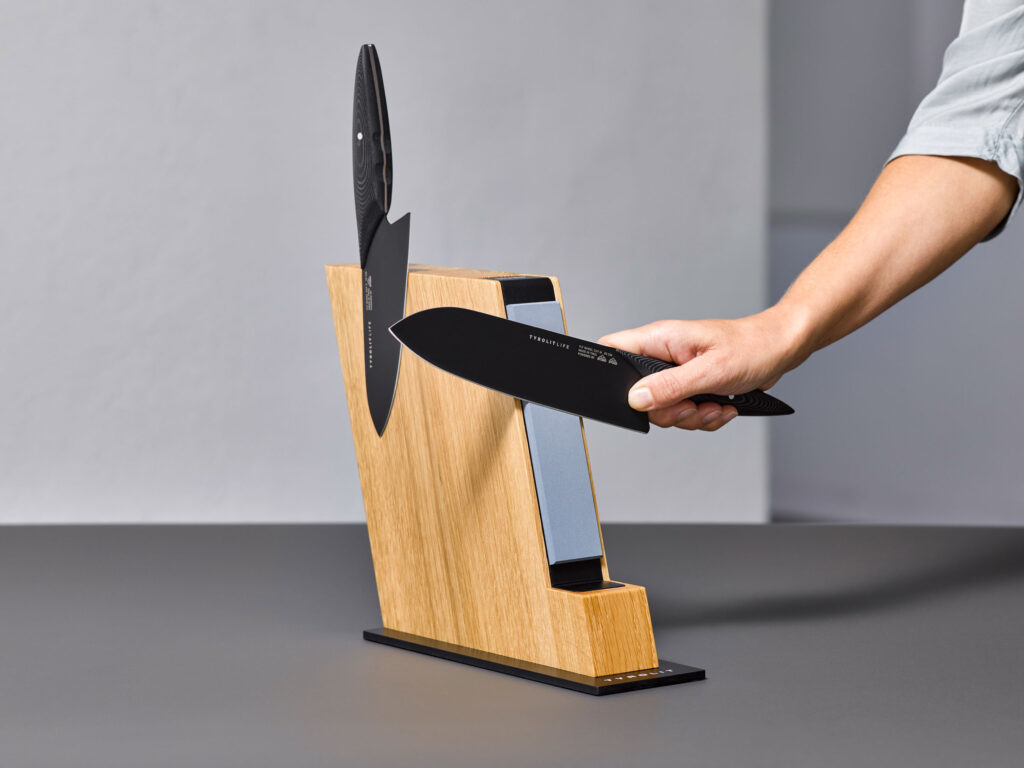
The Tyrolit knife sharpener blends the benefits of traditional sharpening aids with the precision of a whetstone: On each side, it is equipped with a whetstone of grits 400 and 800, set at a fixed angle of 15 degrees. This sharpening angle is deemed perfect for most types of European knives, allowing the knife to be easily guided vertically over the sharpener. This ensures you maintain complete control over the sharpening process to achieve precise results.
Tyrolit Life has also extended the advantages of its knife sharpener to other kitchen utensils: both the knife block and the cutting board from the Tyrolean expert for bonded abrasives offer an integrated sharpening stone with a preset sharpening angle – for sharp knives ready for use at any time.
FAQs
What is the best knife sharpener?
How do professionals sharpen their knives?
Which is sharper – 15 or 20 degrees?

